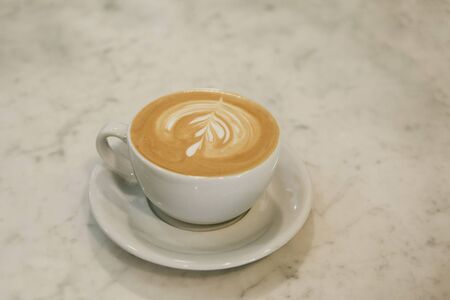A Stroll Down Memory Lane: The Age of the British Tea Room
There’s a certain romance to the memory of the British tea room, an institution woven into the very fabric of our High Streets. Before artisan coffee became a byword for urban cool, it was the gentle clink of china and the mellow aroma of Earl Grey that defined afternoons in towns up and down the country. The origins of the traditional tea room stretch back to Victorian days, when temperance movements championed alternatives to public houses and women sought respectable spaces outside their homes. These tea rooms blossomed into social sanctuaries—places where friends met, gossip was exchanged, and everyday rituals were elevated by delicate sandwiches and scones piled high with clotted cream. More than just venues for refreshment, tea rooms helped shape the collective heartbeat of British society, nurturing community spirit on every High Street from bustling London boroughs to quiet northern market towns. Their legacy lingers in the rituals we keep and the nostalgia we feel—a reminder that, at its heart, British social life has always found comfort in a well-brewed cup shared among neighbours.
2. Espresso Arrives: The Rise of Coffee Shops
As the twentieth century unfurled, British high streets found themselves swept up in a continental breeze. The arrival of Italian espresso culture — rich, aromatic, and unapologetically bold — marked a seismic shift in our daily rituals. Suddenly, the gentle clink of teacups was joined by the hiss and steam of espresso machines, coaxing city dwellers out from behind lace curtains into vibrant, bustling coffee bars. These weren’t just new places to sip; they were social stages where the art of coffee became a communal experience.
Italian immigrants, with their knowledge of crema-topped shots and gleaming Gaggia machines, introduced a style that felt cosmopolitan yet somehow intimate. London’s Soho saw its first espresso bars in the 1950s, quickly becoming haunts for artists, writers, and those with an appetite for modernity. The humble “caff” began to give way to sleek counters and the inviting aroma of roasted beans. Soon after, international chains—think Costa, Caffè Nero, and eventually Starbucks—would take this revolution mainstream, blending global sensibilities with local quirks.
| Coffee Shop Era | Main Features | Urban Impact |
|---|---|---|
| 1950s-1960s | Independent espresso bars Italian influences Bohemian clientele |
Creative hubs Nightlife revival Youth culture emergence |
| 1990s-present | International chains Diverse menus (latte, cappuccino) Takeaway culture |
Homogenised high streets Extended opening hours Work-friendly spaces |
This changing landscape didn’t just alter what Britons drank; it redefined how we used our public spaces. Coffee shops became extensions of living rooms and workspaces—cosy corners to write poetry or tap away at laptops, places to people-watch or catch up on the latest urban gossip. From once being temples to tea-drinking solitude, our high streets began pulsing with the energy of caffeine-fuelled connection. So next time you cradle a flat white beneath Edison bulbs, remember: every cup is part of an ongoing story of cultural exchange and urban transformation.

3. Habitual Shifts: Changing Tastes and Lifestyles
It’s a curious sight to see so many flat whites in hand as you wander down the British high street—once the hallowed ground of tea rooms, now peppered with the aroma of espresso. The shift isn’t simply a matter of taste; it’s woven into the very fabric of modern British life. Where once a pot of Earl Grey was the centrepiece for slow afternoons and genteel conversation, today’s urbanites are drawn to coffee shops that double as offices, social hubs, and creative retreats.
So, why are Brits putting down their teacups and picking up flat whites? In part, it’s the pace: our cities pulse faster than ever before. The rise of remote work and flexible hours means people no longer need to clock off at half four for a cuppa at home—they’re just as likely to tap away at laptops in bustling cafés, fuelled by caffeine and free WiFi. Coffee shops offer more than just a drink; they provide a third space between home and work, somewhere to hatch plans or simply watch the world go by.
Meanwhile, leisure itself has evolved. Gone are the days when leisure meant formal outings; instead, it’s about informality and connection. A quick cortado with friends or colleagues is less about ritual and more about convenience—though there’s still an art to finding your favourite spot on the banquette. Social patterns have shifted too; younger generations gravitate towards places where individuality is celebrated in every latte art swirl.
The high street reflects these new rhythms. Where once we’d gather in hushed tea rooms beneath chintz lampshades, now we spill out onto pavements with oat milk flat whites in hand, blurring the lines between work and play. It’s not that tea has lost its charm—it’s just that Britain is sipping something new, one café at a time.
4. The New Social Hubs: Coffee Shops as the Modern Living Room
Walk along any high street from Brighton to Manchester, and you’ll notice a modern ritual unfolding behind steamed windows and the subtle hum of espresso machines. Where once the tea room reigned—delicate, doily-laden spaces for quiet chat—today’s coffee shop has become Britain’s unofficial living room. These spaces are less about the caffeine hit and more about the collective experience: a place to gather, create, and momentarily pause from urban bustle.
In recent years, coffee shops have woven themselves into the very fabric of British city life. Students hunch over laptops, freelancers sketch out ideas on napkins, and friends reconnect across mismatched chairs. Unlike their tea room predecessors, which often felt exclusive or reserved, today’s coffee shops radiate inclusivity. Whether you’re after oat milk flat whites or just a warm corner on a rainy day, there’s a seat for you.
The communal nature of these spaces is evident in how they cater to diverse needs—a far cry from the uniformity of old-fashioned tearooms. To illustrate this shift, consider the following table:
| Traditional Tea Rooms | Modern Coffee Shops | |
|---|---|---|
| Main Clientele | Ladies, pensioners, tourists | All ages: students, creatives, professionals |
| Atmosphere | Quiet, formal, dainty | Buzzy, relaxed, eclectic |
| Main Activities | Afternoon tea, polite conversation | Work, study, socialising, events |
| Beverage Focus | Tea (with cakes & scones) | Coffee (plus alternative milks & pastries) |
| Cultural Role | Tradition & ceremony | Innovation & community building |
This transformation is more than just aesthetic; it reflects deeper currents in British society. Coffee shops are now where ideas spark and friendships ferment—a blend of solitude and sociability that suits our fast-paced yet connection-hungry urban lives. In many ways, the local café has become the new front room for city dwellers—an everyday haven where creativity flows as freely as the filter brew.
5. Independent vs. Chain: The Battle for the High Street
Wander down any British high street and the landscape is a patchwork of familiar logos and handwritten chalkboards, each vying for your attention—and your custom. The rise of big-name coffee chains like Costa, Starbucks, and Pret has brought a certain predictability to our caffeine rituals: you know what you’re getting, wherever you are from Newcastle to Brighton. But alongside these titans, independent cafés persist—sometimes flourishing in quiet defiance, other times barely clinging on amid rising rents and shifting tastes.
This tension is more than just competition; it’s a question of identity. Chains offer convenience and consistency, often drawing in those seeking speedy service or a place to park with their laptops. Yet, for many locals, indie cafés are the soul of the high street—a refuge of mismatched furniture, locally roasted beans, and conversations that spill across tables. They reflect the quirks and character of their neighbourhoods: think hand-stitched bunting, vegan brownies from someone’s nan, and playlists curated with care rather than algorithms.
Of course, not everyone sees this as a battle worth fighting. Some argue that chains democratise coffee culture—making it accessible to more people, everywhere. But others lament the creeping sameness of cloned interiors and corporate menus. When another chain opens up where an old tea room once stood, it’s hard not to feel something intangible has been lost—a sense of place exchanged for uniformity.
The irony is that even as chains expand, they increasingly borrow from indie aesthetics: Edison bulbs hang from the ceiling, sourdough sandwiches sit under glass domes, staff sport aprons dusted in flour or coffee grounds. It’s a nod to authenticity—even as the business model leans towards mass production.
Ultimately, the fate of our high streets rests in the choices we make over flat whites and builder’s teas. Do we crave the comfort of familiarity or the charm of discovery? Supporting independents means preserving those little details that make a town unique—the eccentricities and stories behind every cup. In this ongoing tug-of-war between scale and individuality, perhaps the greatest luxury is having both options within walking distance—a true testament to Britain’s evolving love affair with the humble café.
6. A Sip of the Future: Sustainability and Localism
As we stroll down the high street, the transformation from cosy tea rooms to bustling coffee shops is not just a tale of changing tastes, but also of evolving values. In recent years, both tea rooms and coffee shops have found themselves at the crossroads of sustainability and localism—two guiding principles that are shaping the future of our favourite gathering spots.
Ethical Sourcing: Beyond the Brew
Today’s discerning customers expect more than just a decent cuppa or a well-pulled espresso. There is a growing demand for transparency in sourcing—whether it’s single-origin beans or ethically harvested tea leaves. British establishments, with their long-standing respect for tradition, are now proudly displaying Fairtrade certifications or working directly with growers abroad. This shift is as much about quality as it is about conscience, with patrons increasingly keen to know that every sip supports fair wages and sustainable farming practices.
Environmental Awareness: Greener on Our Streets
The environmental impact of our daily habits can no longer be ignored, and high street venues are responding accordingly. From compostable cups to zero-waste policies and reusable crockery, both tea rooms and coffee shops are striving to reduce their footprint. It’s not uncommon now to see plant-based milk options alongside oat biscuits, or to spot posters encouraging customers to bring their own mugs. This mindful approach resonates with a public that wants its morning pick-me-up served with a side of eco-consciousness.
Community Focus: Rooted in Local Life
Perhaps most poignantly, these spaces are doubling down on their role as community hubs. Independent tea rooms might source cakes from the bakery round the corner, while coffee shops feature artwork by local creatives or host poetry evenings that echo the city’s cultural heartbeat. By nurturing local connections and supporting small producers, they’re helping high streets retain their unique character in the face of global trends.
In essence, whether it’s tea brewed in porcelain or coffee sipped from hand-thrown mugs, the future of Britain’s high street cafés lies in their ability to blend sustainability and local spirit into every cup. As these establishments evolve, they invite us all to pause—not just for refreshment, but for reflection on how our choices shape the places we cherish most.


